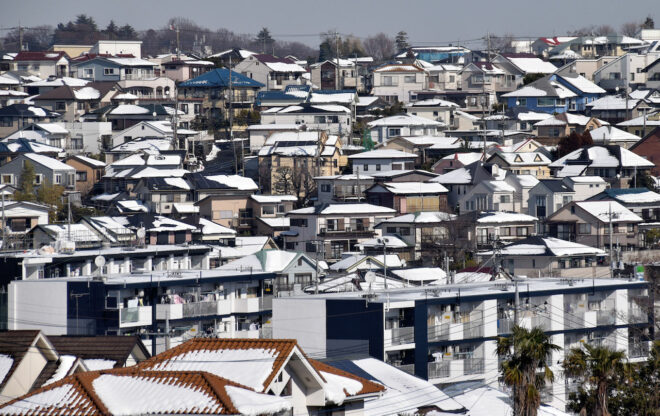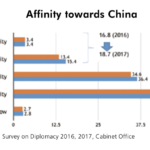Odaki Kazuhiko explains how Japan’s unique salary system with its “commuting allowance” has contributed to the low-rise spread of the vast Tokyo-Yokohama megalopolis.

Residential Honmachida in Machida City, a suburb of Tokyo and Yokohama. YOSHIMITSU KUROOKA VIA FLICKR, CC BY-SA 2.0
Tokyo is one of the world’s largest cities. According to some rankings, it is the largest city in the world. With 38 million residents, the Tokyo-Yokohama conurbation is ranked by Demographia World Urban Areas as the world’s most populous city. However, population size is not the only factor that earns the city its prominent world status. The Tokyo-Yokohama conurbation extends over 8,000 square kilometers, making it one of the largest metropolitan areas in the world, comparable to those of New York and Los Angeles . This is despite the fact that Japan occupies a narrow, mountainous terrain with few plains. The area of Tokyo is twice that of its rival city, Shanghai, and four times that of Mexico City. The boundaries of metropolitan areas can be determined in several ways. In the case of Tokyo, many people commute from residential areas at least 50 kilometers away. Even if you ride the train for one hour, you will see an uninterrupted landscape of housing for salaried employees who work in Tokyo. Metropolitan Tokyo extends over a large area indeed. Why is this so?
At the same time, visitors to Tokyo are surprised at how “low” Tokyo is. The city has very few tall buildings. While the number of high-rise office buildings in central Tokyo has increased, these are still considered to be out of the ordinary, so much so that high-rise condominiums are given the special designation of “Tower.” Seen from a high point, Tokyo is unusually low and flat. The Tokyo-Yokohama conurbation is occupied mostly by two-story detached wooden houses, even in the city center. For a 50 km radius in any direction, it is mostly two-story detached wooden houses. Although the land area is small, it is occupied mostly by low buildings. Tokyo is low and extends over a large area.
Tokyo’s most distinctive feature is its commuter railway network. Every morning, each railway company carries around 10 million people into the city center on its railways, which radiate out from the center. The congestion between 8 and 9 o’clock in the morning is unrelenting, yet transportation capacity, punctuality, and safety are astonishing. Every morning, 10 million people living in two-story detached wooden houses in suburbs 50 km from the city center come to work in the city center on commuter trains that are packed to twice their capacity. This is the distinctive feature of Tokyo that is “low and extends over a large area.”
She Don’t Care
Large cities around the world prefer condominiums closer to the city center, so they are “small, thick, and high.” So why is it that people who work in Tokyo do not live closer to their jobs? The reason that Japanese people live in two-story wooden houses 50 km away rather than in apartments in the city center is the “commuting allowance” that was introduced in the 1950s and 1960s. The commuting allowance is a salary system unique to Japan, whereby salaries increase by the amount of transportation costs. Companies treat this allowance as personnel expenses, with corporate tax reduced accordingly. Since employees do not need to pay income tax or resident tax on this salary supplement, living far away from the workplace both increases the employee’s salary and offers a tax incentive.
Residents in cities around the world make a choice between living in the city center, where rent is high but commuting time and transportation costs are low, and living in the suburbs, where rent is low but commuting time and transportation costs are high. In Japan, however, “transportation costs” are free. Living in the suburbs lowers rent and increases salaries without increasing taxes. This system is attractive, particularly for full-time housewives, once numerous in Japan, who were able to live in large, inexpensive suburban homes without themselves having to endure the congestion of long train commutes. Every extra hour that the male breadwinner commutes each day increases his salary by 20,000 yen a month, enabling his wife to fulfill her desire for a home in the suburbs.
The commuting allowance supported by the government has made Tokyo a thin, low city extending over a large area. Japanese municipalities, real estate developers, and railway companies do not expect this unique profile to change significantly anytime soon. So deeply has the concept of being paid to commute to work permeated Japan that when people purchase property and plan their lives, they do so in the full confidence that they will receive the commuting allowance.
ODAKI Kazuhiko is a professor at Nihon University and consulting fellow at the Research Institute for Economy, Trade and Industry.
[This article first appeared in the January/February issue of the Japan Journal.]








